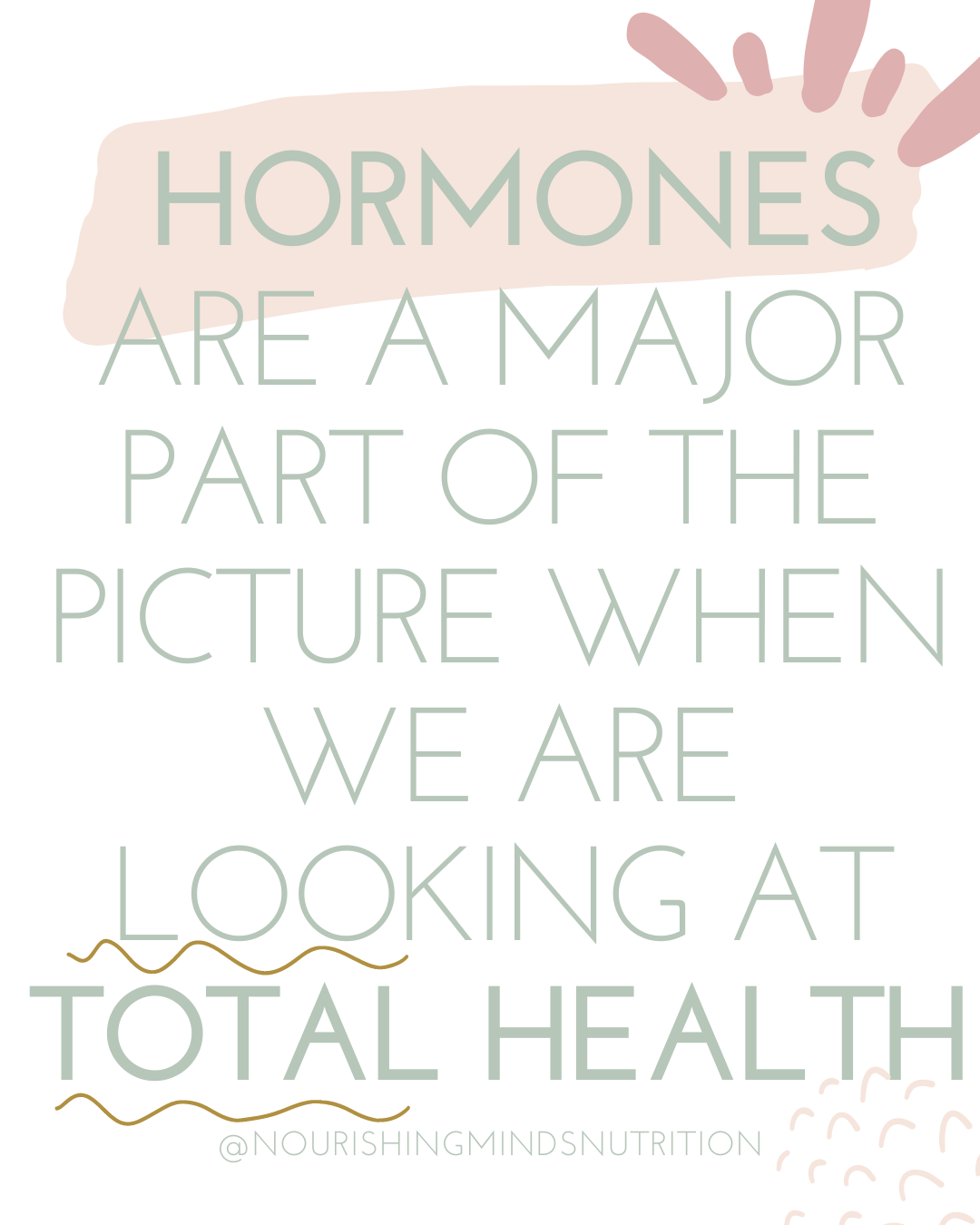What is estrogen dominance?
Our hormones are a major part of the picture when we are looking at total health. They affect many body functions including sleep, stress response, sex drive and fertility, and our appetite. I wrote a blog post all about hormones here if you’d like to check it out! Today though, I’d like to focus on two specific hormones: estrogen and progesterone.
Estrogen and progesterone play important roles in the menstrual cycle. If these hormones are out of balance, you may experience PMS symptoms, irregular cycles, or difficulty getting pregnant. While it is common for us to see clients at Nourishing Minds Nutrition who experience hypothalamic amenorrhea and have low estrogen levels, we also see clients with high estrogen levels or estrogen dominance.
You may have heard of estrogen dominance or read about it online when googling PMS symptoms. This condition has become a more common concern for people, but it is more complex than it seems! So let’s dive in!
Estrogen dominance is a condition that occurs when the level of estrogen is relatively high compared to the level of progesterone. Estrogen may be elevated due to an overproduction by the ovaries or due to problems with metabolism or excretion. This is known as frank estrogen dominance. Estrogen dominance can also appear when estrogen is high in relation to a low progesterone level, known as relative estrogen dominance. In this situation, estrogen could actually be within the normal range. This is important to understand because the treatment plan is not always to decrease estrogen. Looking at the root cause is the best way to treat your case successfully. People with different root causes may have different symptoms, but these can overlap, as well.
What are symptoms to look for if you suspect you have estrogen dominance?
Common symptoms of estrogen dominance:
-irregular periods
-heavy periods
-breast tenderness
-fibroids
-painful cramps
-abdominal bloating around your period
-anxiety or panic attacks
-hair loss
-headaches
-mood swings
-cold hands or feet
-difficulty sleeping
-fatigue
-hot flashes and/or night sweats
-spotting in between periods
-low sex drive
It is possible to experience these symptoms without having estrogen dominance! Looking at symptoms alone is not enough.
If you have symptoms of estrogen dominance, it is best to work with a professional and have blood work done to determine if you have estrogen dominance and what the root cause is. Prior to having labs drawn, it is important to know WHEN you should have them drawn for the most accurate results.
For those who are menstruating and have not reached menopause, estrogen levels fluctuate. They are typically lowest in the beginning of your cycle and then peak just before ovulation. After ovulation, estrogen significantly decreases, and then rises once more to a second, smaller peak about a week after ovulation. Progesterone also fluctuates - aren’t hormones amazing?! It is low in the early part of the cycle, increasing slowly, and then rises significantly after ovulation. Progesterone then drops just before cycle day 1 of your period. This shows us why it is best to test your labs on specific days of your cycle. It is recommended to test 4-7 days after ovulation, which should be about 7 days before the start of your period.
Finally, I want to look at some common causes of high estrogen and low progesterone. If you have elevated estrogen on your bloodwork, it may be due to:
-gut or digestive issues (not eliminating estrogen properly)
-genetics
-birth control pill or hormone replacement therapy
-specific nutrient deficiencies
-estrogen exposure through BPA, pesticides, and some beauty products
Causes of low progesterone could include:
-stress
-not eating enough
-too much exercise
-birth control pill or hormone replacement therapy
-not ovulating (common with PCOS)
-under or over active thyroid
-high prolactin levels
-endometriosis
If you have estrogen dominance, there are absolutely ways to treat it! In our practice, we assess the root cause and then use a combination of intuitive eating, stress management, supplementation, gentle nutrition, and lifestyle changes to help alleviate your symptoms.








